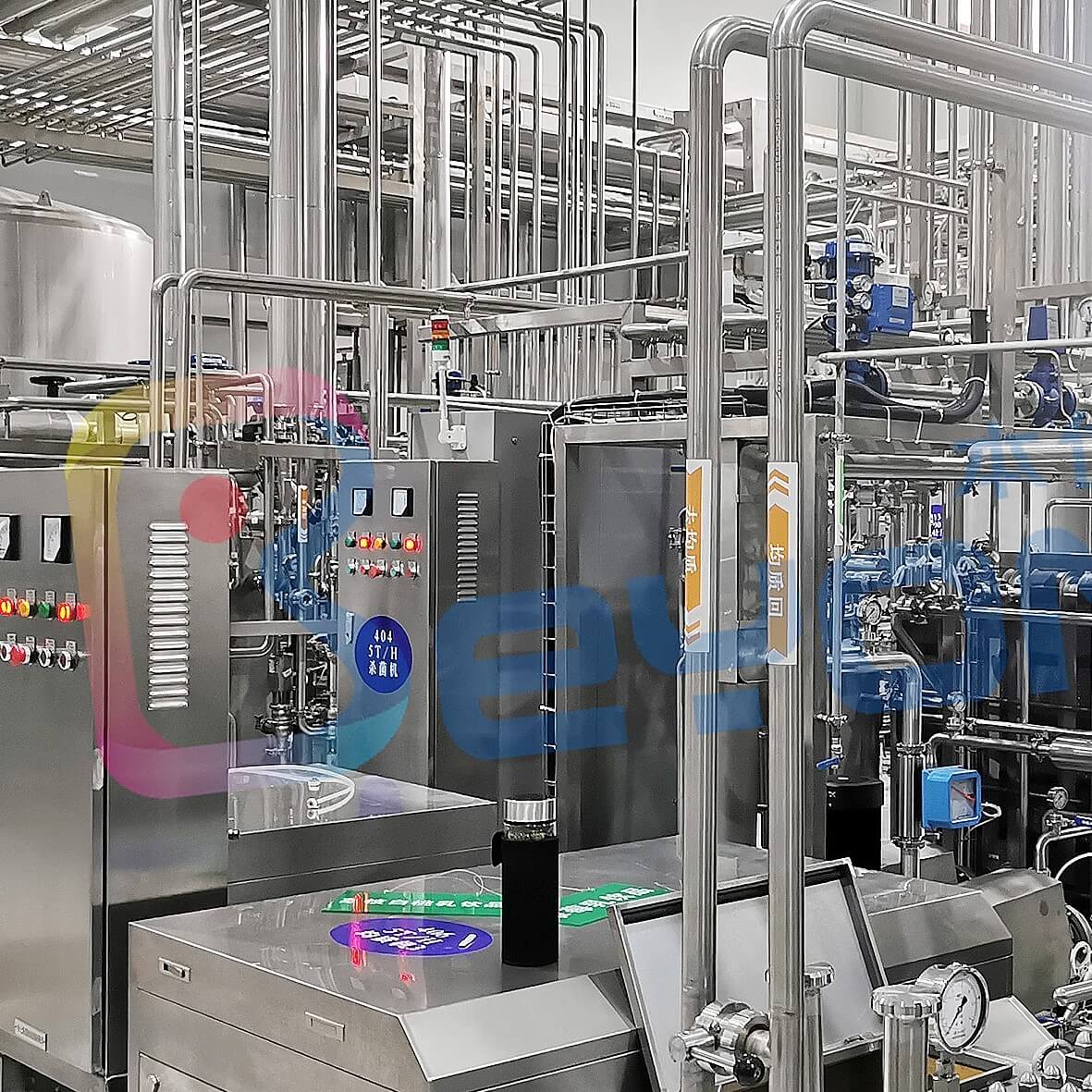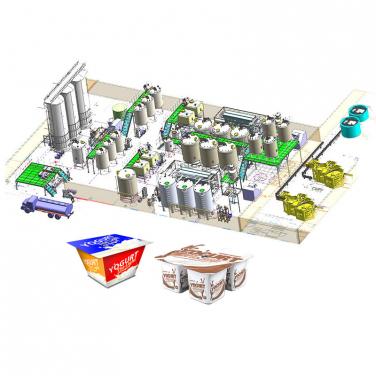
UHT ultra-high temperature sterilization equipment is widely used. In recent years, some design defects in ultra-high temperature sterilization equipment have led to unstable production performance or product quality issues. These defects mainly include insufficient production processing capacity, unstable sterilization temperature, and increased scaling and coking speed. This article elaborates on this.
The process of sterilization machines is determined based on production process parameters, and there are any process requirements and production processes that cannot be completely identical. The correct process determines the performance of sterilization equipment, therefore, determining the optimal equipment process route is the first step in designing sterilization mechanism keys. After determining the process flow, design and calculate according to the process flow. Some processes that are too simple or too cumbersome can bring many problems to production, such as the problem of multiple uses of one machine, which requires consideration of size and short circuiting, which can easily cause instability in control or accelerate the speed of scaling and coking; A good process flow should not only have the correct flow direction, but also indicate the nominal diameter (or diameter) of all gate pump instruments and pipelines in the process. The most important thing is that the temperature parameters of the inlet and outlet of the material passing through the heat exchanger must be accurately marked. The basis for these calculations can be used to reduce errors when conducting process calculations.

There are various and diverse materials, and there are many similar materials. Choosing the appropriate sterilization equipment based on the material selection is a key issue. The dry matter content and viscosity of the material, whether there are chemical changes in the material during the sterilization process, and the degree of scaling and coking during the sterilization process are all issues that need to be considered when selecting the type of sterilization machine. Secondly, it should be noted that if the plate type of ultra-high temperature sterilization can achieve sterilization, Tubular ultra-high temperature sterilization equipment can also be completed.
The lack of production capacity is mostly caused by the smaller heat exchange area calculation of the sterilizer, and the smaller heat exchange area is mostly caused by the excessive selection of Heat transfer coefficient calculation, which is the most common reason for the smaller heat exchange area. The heating medium of UHT ultra-high temperature sterilization equipment is Superheated water. There is a difference between Superheated water and steam. As the heating medium, Superheated water's Heat transfer coefficient is generally between 1200~1400kcal/m2 · h · ℃, so it should not be too large. The properties of the material have a significant impact on the effectiveness of heat transfer, and if the material is idealized for design, it will result in an area that is too small. The bactericidal effect should not be judged solely based on the bactericidal area, but should withstand production testing to meet production needs and be convincing.
During the sterilization process, the sterilization temperature and feed concentration should be stable. Firstly, the feed temperature should be stable, and secondly, the feed liquid should be consistent before and after, which is a condition for stable sterilization temperature. When the sterilization temperature is insufficient, this part of the material liquid needs to return to the feeding cylinder, and the temperature of this material liquid should be close to the temperature of the raw material liquid in order to maintain the stability of the sterilization temperature. To stabilize the sterilization temperature, a corner seat valve can be installed behind the steam inlet control valve, as shown in Figure 1.
Loading pictures
Figure 1 Control of heating temperature using corner valve
Fig.1 Using angle seat valve to control heating temperature
The sterilization machine needs to be cleaned during the production process, and the cleaning interval time may vary depending on the material. The optimal cleaning process route and cleaning interval time should be determined based on the specific material. At the same time, the cleaning should be thorough, or the sterilization machine should be dismantled regularly for sampling inspection. If the cleaning is not thorough, it not only affects the stability of the sterilization temperature, but also leads to unqualified products and affects product quality. Previously, quality issues caused by incomplete cleaning were quite common. Some sterilization machines had already charred and carbonized the materials in the heat exchange tubes after opening, indicating the severity of the problem.
There are two types of pumps, one for conveying materials and the other for cleaning. The pumps used for material delivery on the sterilizer are mostly centrifugal pumps cooled by double sealing water. For viscous material liquids such as tomato ketchup, Screw pump (or positive displacement pump) and high-pressure pump can be used together for delivery. In recent years, there have also been reports of severe mechanical seal wear when using pumps with dual seals, which can easily lead to cooling water entering the material. Of course, this is only an example and cannot be rejected for this reason. All sterilization equipment is equipped with cleaning pumps, which are divided into two types: segmented multi-stage pumps and centrifugal pumps. It should be noted that the flow rate of the cleaning pump should be greater than the flow rate of the material. The purpose of the large flow rate is to ensure that the cleaning solution has a relatively high flow rate in the sterilizer, which will have a flushing effect on scaling and coking materials. Therefore, the flow rate of the pump used for cleaning is generally 2-3 times the amount of material, and the head is equivalent to the head of the material.
Even a small design defect can cause equipment operation or performance problems. To design a good sterilization equipment, it is necessary to start from small details and understand and master the characteristics of the material. For new materials, experimental research should be conducted to design equipment that meets the needs of the production process.



